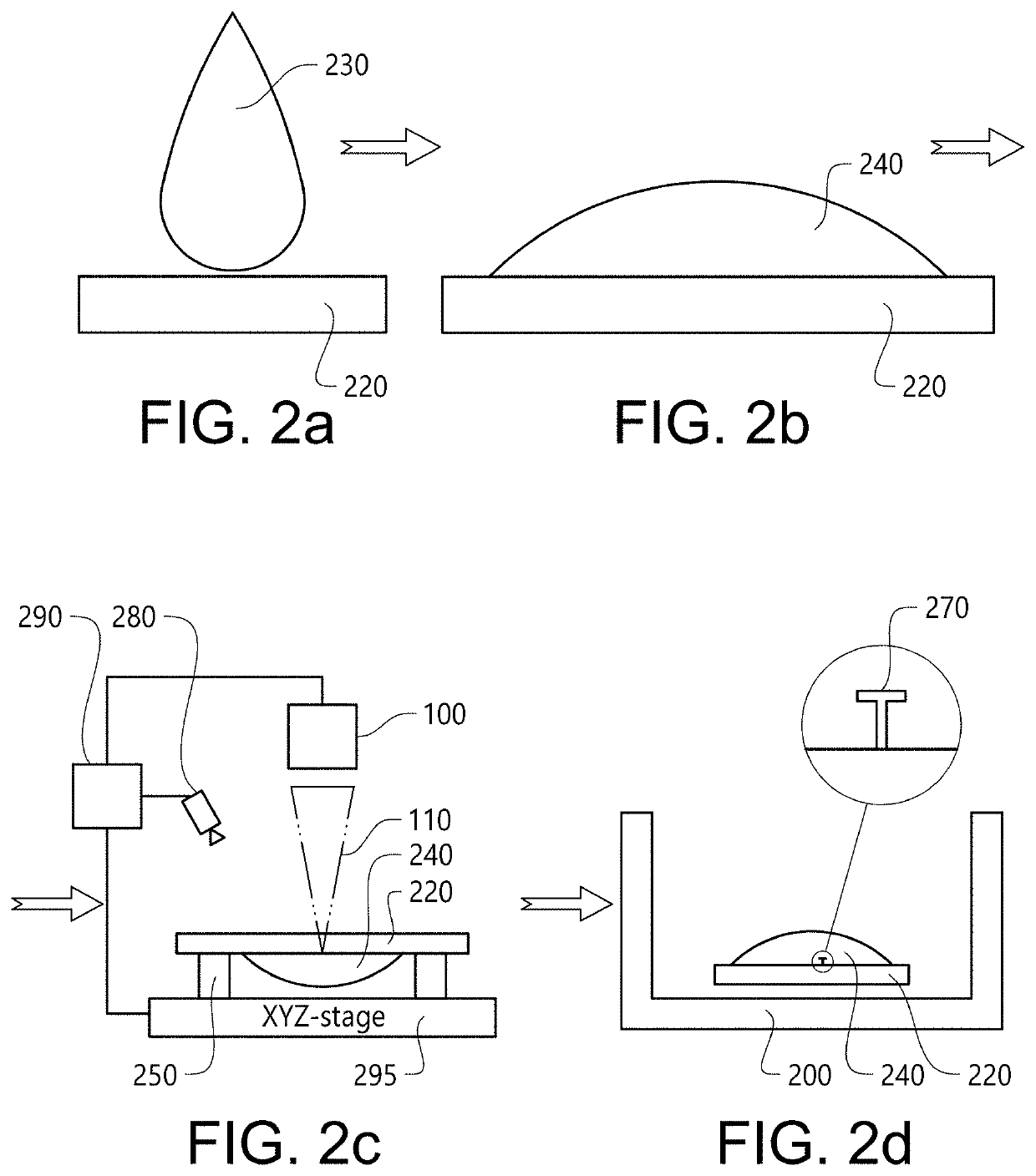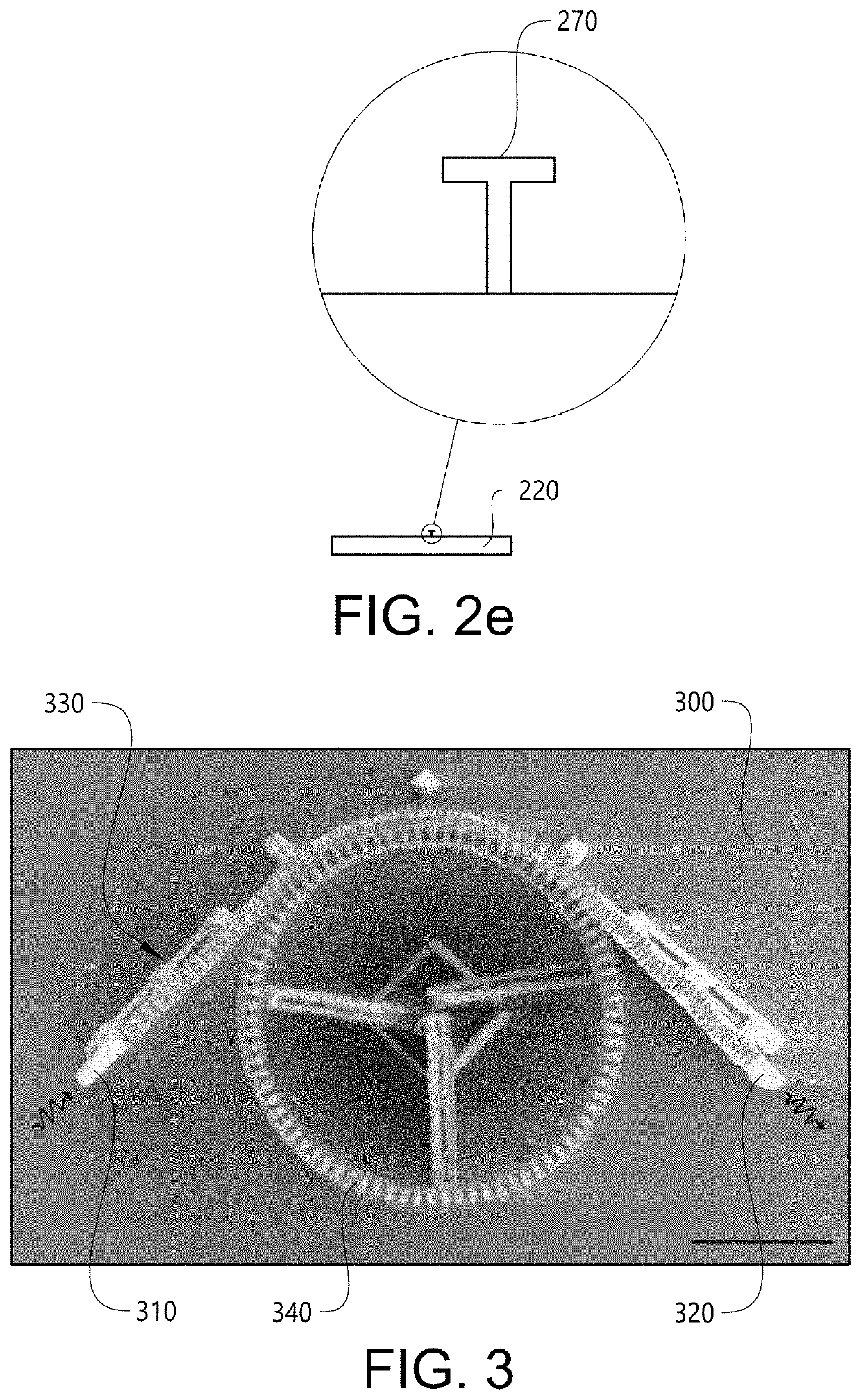Method and apparatus for additively forming an optical component
a technology of optical components and additive manufacturing, applied in glass making apparatus, additive manufacturing, manufacturing tools, etc., can solve problems such as limiting resolution, impeded structure, and potential sidewall roughness issues
- Summary
- Abstract
- Description
- Claims
- Application Information
AI Technical Summary
Benefits of technology
Problems solved by technology
Method used
Image
Examples
Embodiment Construction
[0027]FIGS. 1a-b depicts a schematic picture of an exposure system 10 and multi-photon absorption principle. The exposure system 10 comprises a source for generating electromagnetic waves 100, a focusing lens 120 and a photo imageable layer 150. The source for generating electromagnetic waves may be a light source, for instance a femtosecond titanium sapphire laser, an argon ion-pumped laser, a colliding-pulse mode locked laser operating at frequencies from 1 Hz-100 MHz or 10 Hz-80 MHz or 100 Hz-1 MHz. The focusing lens 120 may be a single lens or a lens system. The focusing lend may be immersed in immersion oil for improved optical performance. The lens system may have fixed lenses in relation to each other or lenses with adjustable distance from each other. The lens system may be a variable focal-length lens assembly. The lens system may provide for a varying position of a focal point 130 within said photo imageable layer 150 in one or several directions. In various example embodi...
PUM
| Property | Measurement | Unit |
|---|---|---|
| thickness | aaaaa | aaaaa |
| wavelength | aaaaa | aaaaa |
| temperature | aaaaa | aaaaa |
Abstract
Description
Claims
Application Information
 Login to View More
Login to View More - R&D
- Intellectual Property
- Life Sciences
- Materials
- Tech Scout
- Unparalleled Data Quality
- Higher Quality Content
- 60% Fewer Hallucinations
Browse by: Latest US Patents, China's latest patents, Technical Efficacy Thesaurus, Application Domain, Technology Topic, Popular Technical Reports.
© 2025 PatSnap. All rights reserved.Legal|Privacy policy|Modern Slavery Act Transparency Statement|Sitemap|About US| Contact US: help@patsnap.com



